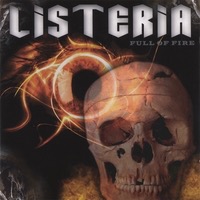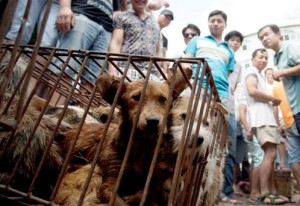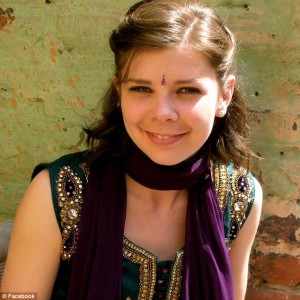Oliver Sacks, a professor of neurology at the New York University School of Medicine, the author of many books, including “Awakenings” and “The Man Who Mistook His Wife for a Hat,” has revealed he is dying, via the N.Y. Times.
 “My luck has run out,” is how Sacks, 81, announced to the world Thursday that he has terminal cancer.
“My luck has run out,” is how Sacks, 81, announced to the world Thursday that he has terminal cancer.
The neurologist and author — his autobiography comes out this spring, and he has “several other books nearly finished — revealed his condition in an op-ed in Thursday’s New York Times that was soon being widely shared, and admired, online.
Here are five of the most frequently quoted words of wisdom from the column:
- Self-assessment: “I cannot say (nor would anyone who knows me say) that I am a man of mild dispositions. I am a man of vehement disposition, with violent enthusiasms, and extreme immoderation in all my passions.”
- Detachment: “I still care deeply about the Middle East, about global warming, about growing inequality, but these are no longer my business; they belong to the future.”
- Gratitude: “I have loved and been loved; I have been given much and I have given something in return.”
- Focus: “There is no time for anything inessential.”
- Inimitability: “When people die, they cannot be replaced. They leave holes that cannot be filled, for it is the fate — the genetic and neural fate — of every human being to be a unique individual, to find his own path, to live his own life, to die his own death.”
This is what I wrote in Toronto’s Globe and Mail book review section in 1994, about my grandmother, who ended her own life in 1983.
After five years of painstaking care for her husband, who was slowly deteriorating from the cerebral ravages of Alzheimer’s disease, she decided that a sixth was not worth facing.
Her death was quick and without warning. One moment we were saying goodbye before a routine trip to the store, the next I was transferring her from car to wheelchair at the hospital emergency ward. Within 30 minutes she was officially deceased, the result of a major pharmaceutical overdose.
Looking back, I’ve often wondered what I would say to her, given the chance. Don’t do it, life is really okay. You are not alone. Things will get better.
But in reality, life is often harsh, she was often alone, and the prospects of yet another winter, trekking to the hospital each day to watch the person she had spent the vast majority of her life with become even more unfamiliar, meant that things certainly were not about to get better; at least not in any foreseeable future.
Humans have created powerful myths and rituals to accompany death, writes Sherwin Nuland in How We Die, but perhaps none more bizarre than the modern hospital, “where it can be hidden, cleansed of its organic blight, and finally packaged for modern burial. We can now deny the power not only of death but of nature itself. We hide our faces from its face, but still we spread our fingers just a bit, because there is something in us that cannot resist a peek.”
Dr. Nuland, a physician who has authored several books about the medical profession and continues to teach surgery and the history of medicine at Yale University, says this book was written to demythologize the process of dying, to present it in its biological and clinical realities. The changes at a cellular and organ-level that accompany heart attacks, stroke and cancer are presented in detail that may be intimidating to the uninitiated. Then again, any person who is faced with life-threatening disease can quite rapidly assimilate the medical jargon — they have to. Physicians capable of talking in clear, simple language are rare.
Marilynne Seguin’s A Gentle Death is an attempt to help ease that journey for patients and their families. Sequin, a registered nurse for over 30 years as well as a founding member and executive director of the Toronto-based Dying With Dignity tells how she, like Nuland, was trained to prolong life at all costs. Experience has taught her to question prevailing attitudes of the medical establishment and she stresses that patients must become informed and responsible for the medical decisions that affects their lives.
In presenting the many examples of people approaching death who Sequin has cared for, a common theme emerges. Rather than a passive silence, many approaching death wish to be at home, surrounded by the noise of children — the noise of life — rather than the sobering silence of loneliness.
Both books try to dispel the hero myth, the one where the nurse or physician is never to allow the patient to lose hope. Yet hope and wishing for miracles get in the way of true discussion; it robs people of their death.
Nuland writes we are currently in the vitamin era, following previous attempts to prolong life through the pseudoscience of monkey glands, mother’s milk, and, as King David tried, sleeping between two virgins. Coming soon will be expanded attempts to prolong life through the mass availability of human growth hormone, derived by genetic engineering, and gene therapy. Only “accurate knowledge of how a disease kills,” writes Nuland, “serves to free us from unnecessary terrors of what we might be fated to endure when we die. We may thus be better prepared to recognize the stations at which it is appropriate to ask for relief, or perhaps to begin contemplating whether to end the journey altogether.”
Which leads to the hotly debated topic of physician-assisted suicide and the right of rational individuals to decide how and when to end their lives. At this point the two books differ strongly. Nuland approves of Living Wills and other advanced care directives, instructing physicians what treatments to withhold in the face of terminal illness, but he strongly disapproves of physician-assisted suicide. Seguin, whoever, sees no distinction. Much of her book is devoted to a frank discussion of the practical advantages and limitations of such approaches.
Nuland, however, fails to come clean on the topic, when he mentions in passing that, “Like so many of my colleagues, I have more than once broken the law to ease a patient’s going, because my promise, spoken or implied, could not be kept unless I did so.” Seguin states quite clearly that many physicians have engaged in such activity, so why not create clear, legally-binding rules, as has been done in the Netherlands.
One Dutch physician who supports the new law says society needs a counterweight for the enormous technology of modern medicine. But more importantly he says, it gives the patient a chance to take leave openly of his children, his grandchildren, and others.
That openness seems crucial to further public discussion of death and dying. I still wonder what I would say to someone who is about to leave this earth on their own accord. Both books provide unique and moving insight into such conversations. Perhaps I now know what I might have said to my grandmother.
 Schwartz, who described the outbreak as “sporadic,” said the province has the inputs and technology needed to diagnose and treat the disease, which occurs by exposure to bacteria in poorly cooked meat or through (poor) food processing. The minister recommended using domestic prevention measures such as cooking red meats, especially hamburgers, sausages and meatballs, at a suitable temperature, and washing hands before handling food, as well as appropriate kitchen hygiene to avoid cross-contamination of food.
Schwartz, who described the outbreak as “sporadic,” said the province has the inputs and technology needed to diagnose and treat the disease, which occurs by exposure to bacteria in poorly cooked meat or through (poor) food processing. The minister recommended using domestic prevention measures such as cooking red meats, especially hamburgers, sausages and meatballs, at a suitable temperature, and washing hands before handling food, as well as appropriate kitchen hygiene to avoid cross-contamination of food.









